Gudekote pleads: We can no longer Grin and bear it
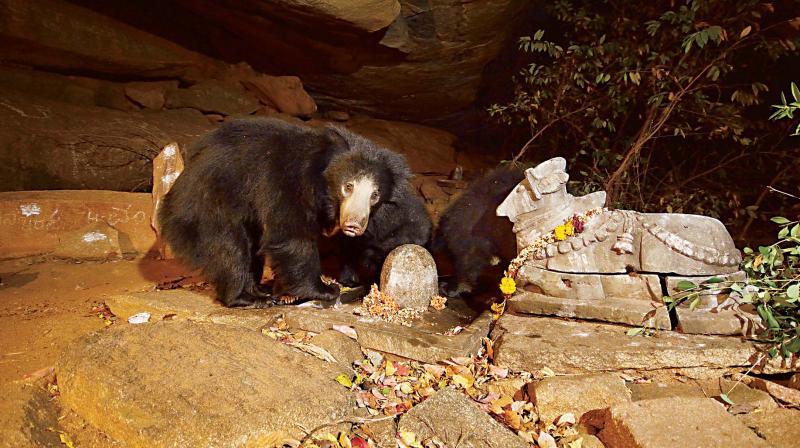
Like she does every day, 58-year old Mallamma was on her way to her family owned betel leaf plantation carrying lunch boxes for her children working in the plantation last Wednesday in Kadakolla village in Kudligi taluk of Ballari. As she was nearing the plantation, a mother sloth bear with a cub which were hiding in the maize saplings, jumped on her all of a sudden, and attacked Mallamma scratching her entire face. A heavily bleeding Mallamma started crying loud on which people came running and chased the mother bear away while capturing the cub. A seriously injured Mallamma was taken to the local PHC for first aid and later, shifted to a hospital in Ballari.
The angry mob was in no mood to relent and kept the cub in the village temple while insisting that forest officials end this wild animal intrusion into villages. Police had to cane the mob to disperse them with the villagers finally handing over the cub to forest officials after receiving an assurance that they would take all precautionary measures to stop wild animals from entering villages.
Kadakolla village is close to Gudekote sloth bear sanctuary and it’s not difficult to find why animal intrusions have been happening with frightening regularity. Can these man-animal conflicts be avoided by planning our sanctuaries and human habitats more carefully? Can we bear with the bears by ensuring them food and an ideal environment in their sanctuary so that they do not have to stray in search of food and water? Shivakumar G. Malagi explains why the Gudekote ‘syndrome’ has to be tackled on an urgent footing so that the poor villagers did not find fully grown bears popping up in their midst.
Not less than 50 people have been injured in bear attacks in the past few years with at least six such cases reported this year from Gudekote, Kukkuppi, Mahadevapura, Appenahalli and Halsagarhatti, to name a few. In the last two months alone, two youth were attacked by bears. As these villages are surrounded by rocky hills covered with bushes, they provide a perfect habitat for bears, wild boar, peacocks and leopards. According to a preliminary estimate, there are about 40 to 50 bears in this ‘firka’.
And why do these lovely creatures cross the confines of their forests to attack the hapless villagers? Human intrusion into forest areas has resulted in the loss of habitat for bears. Owing to deficit rainfall this year, a majority of farmers cultivated groundnut and maize using borewell water. With food unavailable in the forests, the bears are relishing the groundnuts by entering the fields, causing losses to farmers, says Sanna Mallaiah, a youth from Gudekote.
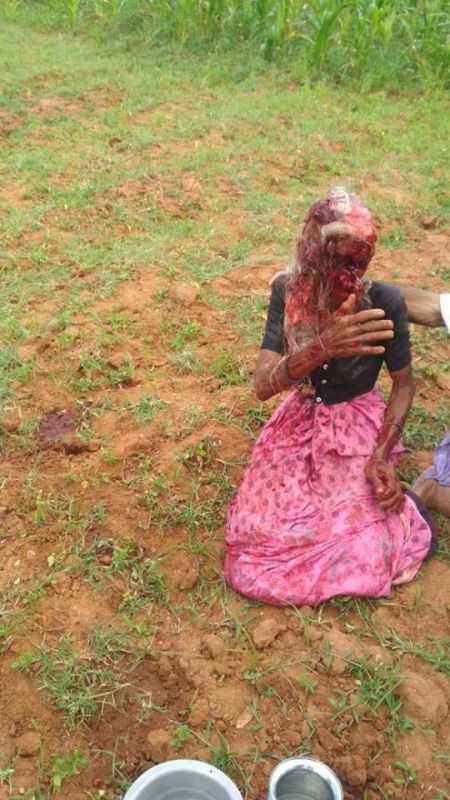 Mallamma, severely injured after bear attack recently in Kadakolla village near Gudekote
Mallamma, severely injured after bear attack recently in Kadakolla village near Gudekote
The bear sanctuary itself was born because of man-animal conflict when people warned that they would take ‘action’ themselves five years ago virtually forcing the forest department to declare this place a wildlife sanctuary. This is the second bear sanctuary in Ballari district which came up in 2013, the first one being Asia’s first sloth bear sanctuary, the ‘Daroji Bear Sanctuary’, created in 1994 near the Hampi world heritage site and a favourite haunt for sloth bears.
So how do we prevent the straying of bears into villagers? Villagers in Gudekote 'firka' demand that the area reserved for the bear sanctuary should be expanded to prevent human–bear interaction. "We have already placed a proposal to expand the sanctuary up to 100 sq kms before the State Wildlife Board and are hopeful it will be approved in the next meeting of the Board", said Mr S.K. Arun, wildlife warden of Ballari.
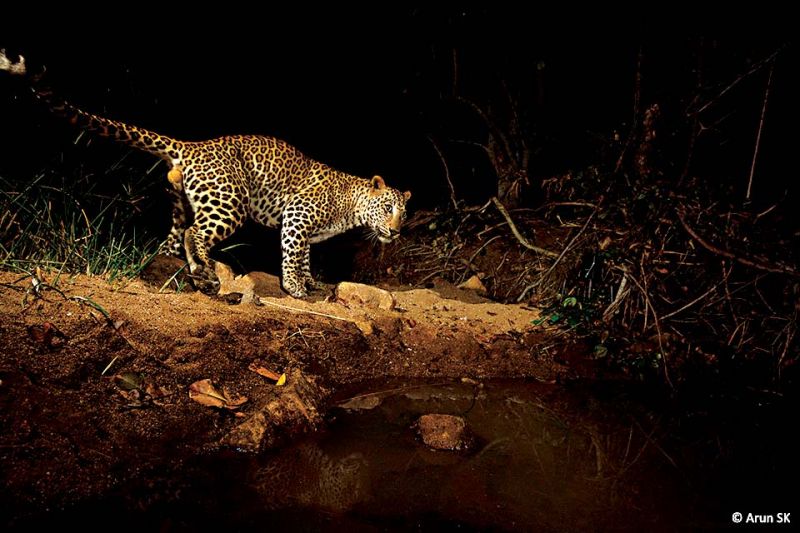 Leopards are the apex predators in this sanctuary. Summers in this region are very harsh; rains are scanty. This tiny waterhole in the heart of Gudekote sustains most of the animals through the dry season
Leopards are the apex predators in this sanctuary. Summers in this region are very harsh; rains are scanty. This tiny waterhole in the heart of Gudekote sustains most of the animals through the dry season
The forest department is also planning safaris to showcase the abundant flora and fauna in this region. An inspection bungalow is being constructed for researchers and wildlife enthusiasts.
"I had the opportunity to install a camera trap at Gudekote with the permission of the Forest Department and was pleasantly surprised to see the number of bears", says Mr Arun while stressing the need for proper documentation of the species.
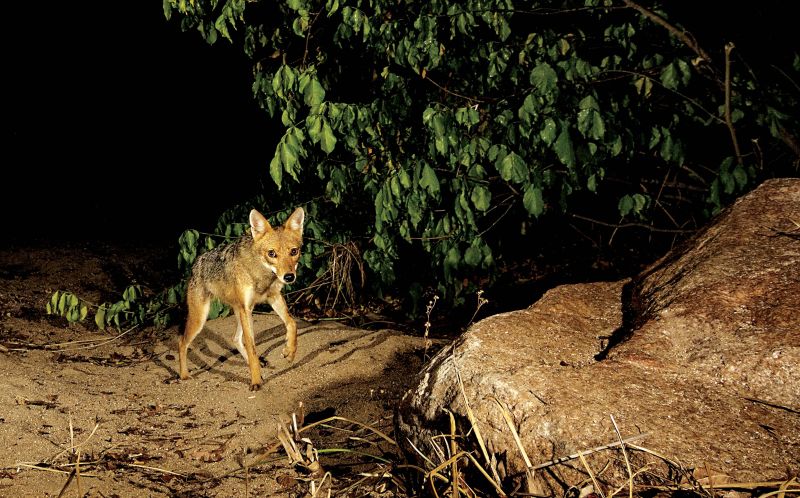 Jackals are the other large predators of the sanctuary; they feed on Black-naped Hare and small rodents
Jackals are the other large predators of the sanctuary; they feed on Black-naped Hare and small rodents
According to him, though Gudekote sanctuary is small, it still supports 50-60 bears apart from leopards, jackals, porcupines, civets, wild boars and Rusty Spotted Cats. There is also an impressive diversity of birds in the sanctuary about 130 species! Even birds like the Crested Hawk Eagle, Indian Pitta, Black Eagle and Verditer Flycatcher, that are uncommon to this region have been seen here. Snakes like Russell’s Viper, Indian Cobra, Red Sand Boa and Common Krait have been sighted emphasising the need for better conservation efforts.
Gudekote which lies about 50 kms to the south of Ballari city is also getting more popular like Daroji with the recent showers giving the rocky terrain a mesmerising green look making it a haven for bears. With water bodies aplenty, both natural and man-made, wildlife can thrive though it cannot be at the cost of the nearby human population.
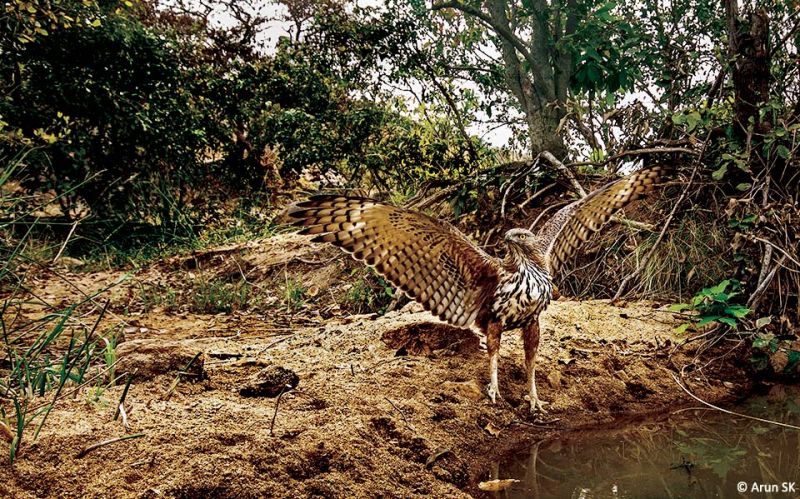 The Crested Hawk Eagle is a forest bird and was an unexpected find in the dry scrub forests of Ballari district
The Crested Hawk Eagle is a forest bird and was an unexpected find in the dry scrub forests of Ballari district
“It is a story of how conservation can change the whole wildlife scenario,” says wildlife activist Mr Abdul Samad Kottur, who proposed this sanctuary. Recollecting those early days, he says, “The region witnessed trouble for more than 15 years. There has not been any major conflict in the last five years, except for a few sporadic incidents."
A lot of effort went into the formation of the sanctuary-a survey was conducted and information pertaining to agriculture activities was gathered before a report was prepared recommending the formation of Gudekote sanctuary. The transformation is now visible in this 4,700 hectare-sanctuary. At least half a dozen anti-poaching camps have been set up and employees here have ensured that the vegetation improves drastically.
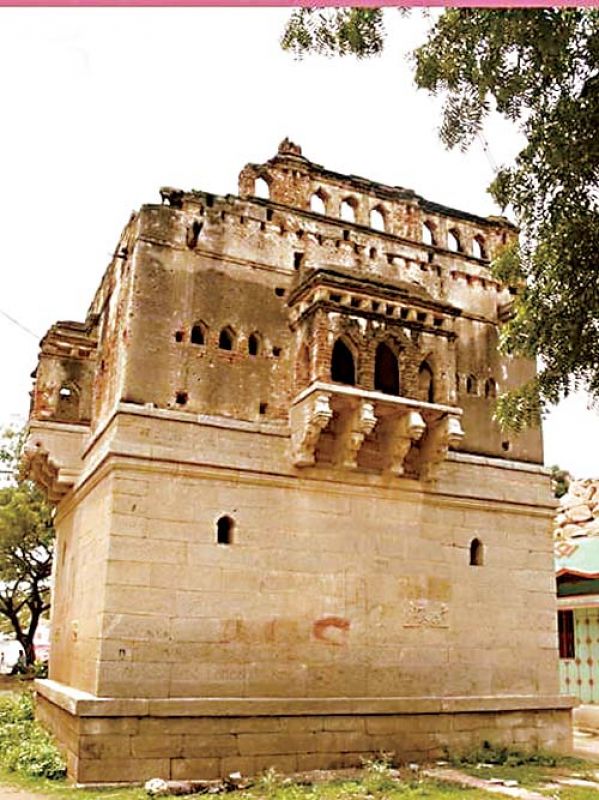 Thangali Gopura, breeze tower in Gudekote
Thangali Gopura, breeze tower in Gudekote
But the task is not complete, there is a need to stop animals from straying out by ensuring sufficient food for them within the forest. Harvesting of non-timber forest produce (NTFP) too has to stop-the custard apple, which grows in abundance here, was harvested in tonnes as NTFP from this place, before it was declared a sanctuary. “Nearly 80 lorryloads of custard apple was harvested and auctioned by the forest department for a mere Rs 80,000. The other NTFP is honey-a favourite food for bears,” explains Samad.
Maybe, what Gudekote needs is a better understanding of the needs of the bears and an effort to convince the local populace that these animals mean no harm as long as we do not invade their terrain and their lives. Animals too like humans need their space and if the bear is straying in Gudekote, it obviously means he is deprived or hurt and is looking for solace from his best friend-the human.

